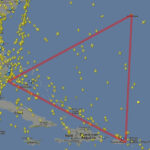House flies are more than just a buzzing annoyance in your home. These common pests, making up about 90% of indoor flies, carry millions of microorganisms on their feet, capable of spreading harmful pathogens and food-borne illnesses. While they don’t bite, their presence is a sign of unsanitary conditions and a potential health risk.
Fortunately, there are numerous effective strategies to both attract and kill house flies, eliminating existing infestations and preventing future swarms. From simple home remedies to more potent solutions, this guide will equip you with the knowledge to reclaim your space from these unwelcome guests.
What Attracts House Flies to Your Home?
Understanding what draws house flies into your home is the first step in effective control. According to entomologist experts, the primary attractants are surprisingly simple:
Food Sources
House flies are strongly attracted to decaying organic matter, which serves as both a food source and breeding ground. This includes:
- Food scraps: Uncovered leftovers, crumbs, spills.
- Garbage: Especially if not properly sealed and emptied regularly.
- Excrement: Pet waste, fecal matter.
- Decaying organic matter: Compost, rotting fruit and vegetables.
Areas with poor sanitation, such as overflowing trash cans or pet waste accumulation, become magnets for flies seeking food and places to lay their eggs.
Breeding Grounds
Female flies seek out moist, decaying organic materials to deposit their eggs. Ideal breeding sites include:
- Garbage bins: Especially those containing food waste.
- Manure and compost piles: Common in gardens or near agricultural areas.
- Rotting vegetation: Overripe fruits, vegetable scraps.
Proximity to external breeding grounds like farms, garbage dumps, or slaughterhouses can significantly increase the likelihood of house fly problems in your home.
Entry Points
Flies are opportunistic and will exploit any opening to access food and shelter indoors. Common entry points include:
- Unscreened windows and doors: Openings without proper mesh screens.
- Cracks and crevices: Gaps in walls, foundations, and around windows and doors.
- Unsealed openings: Holes around pipes, vents, or utility lines.
Sealing these entry points is crucial in preventing flies from entering your home in the first place.
Natural Ways to Attract and Kill House Flies
If you’re looking for eco-friendly and readily available solutions, several natural methods can effectively attract and kill house flies. These remedies often utilize household items to create traps or repellents:
Apple Cider Vinegar and Dish Soap Trap
This simple trap is highly effective at attracting and killing flies. The sweet scent of apple cider vinegar lures flies in, while dish soap breaks the surface tension, trapping and drowning them.
How to make it:
- Fill a bowl or jar with equal parts apple cider vinegar and dish soap.
- Add a spoonful of sugar to further enhance the attraction.
- Place the trap in areas where flies are prevalent.
As an alternative to apple cider vinegar, stale wine or beer can also be used due to their fermenting aromas that attract flies.
Repellent Herbs
Certain herbs naturally repel house flies, making them excellent additions to your home, especially near entryways.
Effective herbs include:
- Basil
- Mint
- Bay leaf
- Tansy
- Rue
Planting these herbs near doorways and windows creates a natural barrier, deterring flies from entering your home.
Essential Oil Diffusers and Sprays
Essential oils extracted from plants like lavender, peppermint, eucalyptus, and lemongrass possess natural fly-repelling properties.
How to use:
- Diffusers: Use an essential oil diffuser to disperse the scent throughout rooms where flies are common.
- Sprays: Mix essential oils with water in a spray bottle and apply to areas where flies congregate.
These oils offer a pleasant-smelling and natural way to keep flies at bay.
Fly Paper and Light Traps
Fly paper and traps are direct methods to attract and physically capture or kill flies.
Fly Paper:
- Sticky strips of paper coated with an attractant.
- Hang in areas with high fly activity.
- Flies get stuck to the paper and die.
- Dispose of used strips regularly.
Light Traps:
- Utilize UV light to attract flies.
- Flies are either trapped on a sticky board or electrocuted.
- Position strategically indoors, away from external light sources and low to the ground (around 5 feet).
- Ensure no competing light sources are nearby for maximum effectiveness.
:max_bytes(150000):strip_icc()/GettyImages-149254944-4371516691b04f629845a27680b32623.jpg)
A sticky fly paper strip hanging indoors, effectively trapping house flies.
Fly-Repelling Plants
Certain plants not only beautify your home but also act as natural fly repellents, similar to herbs.
Beneficial plants include:
- Basil
- Marigold
- Lavender
Potting these plants near windowsills or doorways can help create a less inviting environment for house flies and other insects like mosquitoes.
Chemical Solutions for Severe Fly Infestations
When natural remedies aren’t sufficient to manage a significant fly problem, chemical-based solutions offer a faster and more potent approach. According to entomologist Michel Johnson, founder of Ciao Bedbugs, these solutions utilize compounds specifically designed to target and eliminate flies effectively.
Insecticide Sprays
Common chemical insecticides for fly control include pyrethroids. These are synthetic versions of natural insecticides found in chrysanthemum flowers.
How they work:
- Pyrethroids disrupt the nervous system of flies upon contact.
- Cause paralysis and ultimately death.
Imidacloprid is another chemical often found in bait fly traps, also targeting the flies’ nervous systems.
Important Note: Use chemical insecticides cautiously and according to product instructions. Ensure proper ventilation and avoid direct contact with skin or eyes.
Professional Pest Control Services
For persistent or large-scale fly infestations, especially when breeding sources are difficult to locate or eliminate, professional pest control services are recommended.
What professionals offer:
- Thorough Inspection: Identify fly species, infestation extent, and breeding sites.
- Customized Treatment Plans: Develop strategies based on the specific situation, potentially combining insecticide sprays, baiting systems, and source reduction.
- Specialized Tools and Expertise: Access to professional-grade products and knowledge to handle even severe infestations.
- Fumigation (in extreme cases): For comprehensive eradication in heavily infested properties.
A professional approach ensures effective and targeted fly control, particularly when dealing with complex infestations.
Preventing Future House Fly Infestations
The most effective long-term strategy for managing house flies is prevention. By making your home less attractive and accessible to flies, you can significantly reduce the likelihood of infestations.
Maintain Cleanliness and Sanitation
Reducing food sources and breeding grounds is paramount in fly prevention.
Key practices:
- Clean up food waste and crumbs immediately: From both human and pet food.
- Secure garbage in trash cans with liners and lids: Prevent odors and access to waste.
- Empty garbage and recycling frequently: Don’t allow waste to accumulate indoors or outdoors.
- Clean pet litter boxes and indoor pet toilet areas regularly: Minimize fecal matter that attracts flies.
Eliminate Breeding Grounds
Beyond general cleanliness, specifically target potential fly breeding sites.
Actions to take:
- Pick up pet waste and food in outdoor areas promptly.
- Use tight-fitting lids on outdoor garbage cans.
- Regularly inspect outdoor spaces for rotting food or stagnant water.
- Turn compost piles regularly: Discourage flies from laying eggs in compost.
- Remove grass clippings and leaves promptly: Prevent decay and attraction of flies.
Wise Use of Lighting
Lights can inadvertently attract flies, especially at night.
Lighting strategies:
- Limit unnecessary outdoor and indoor lights at night.
- Turn off lights in rooms not in use.
- Use yellow bug lights: These are less attractive to insects than standard white lights.
- Be mindful of open windows and doors when lights are on inside at night.
Seal Entry Points
Prevent flies from entering your home by physically blocking access.
Sealing methods:
- Caulk or weatherstrip cracks and gaps around door frames, window frames, walls, and foundations.
- Ensure windows are properly closed, especially at night.
- Install and maintain window and door screens: Repair any holes or rips promptly.
:max_bytes(150000):strip_icc()/GettyImages-1833859433-5139076471c74b95a27616e53b9e887b.jpg)
Close up of a hand using a caulking gun to seal gaps around a window frame, preventing flies and other insects from entering.
By implementing these preventative measures, you create a less hospitable environment for house flies, significantly reducing the chances of future infestations.
Frequently Asked Questions About House Flies
– What do house flies look like?
House flies (Musca domestica) are insects belonging to the family Muscidae. They are characterized by gray or black bodies, large red eyes, and two translucent wings. Their body length typically ranges from 0.2 to 0.3 inches. House flies have slightly hairy bodies, with females generally larger than males.
– What is a sign of a house fly infestation?
The most obvious sign is the presence of numerous house flies in your home. You may also find fly eggs, which are laid in batches of about 100 on food waste, rotting meat, or feces. These eggs hatch rapidly within 12 to 24 hours into legless, white larvae called maggots. Maggots develop into pupae and then into adult flies. Adult house flies have a relatively short lifespan of two to four weeks but reproduce quickly.
– What instantly kills flies?
Chemical-based solutions are typically the fastest way to kill flies. Insecticide sprays can provide immediate knockdown. However, it’s important to note that while sprays kill flies on contact, they may not prevent new flies from returning if the underlying attractants and breeding grounds are not addressed. Addressing the root cause of the infestation is crucial for long-term fly control.
By understanding How To Attract And Kill Flies, and more importantly, how to prevent them, you can maintain a clean, healthy, and fly-free home environment.

